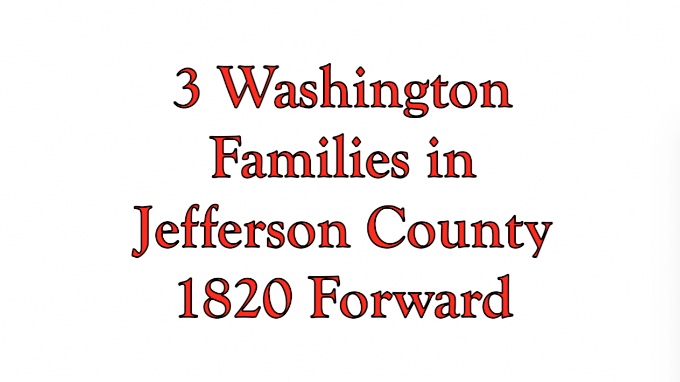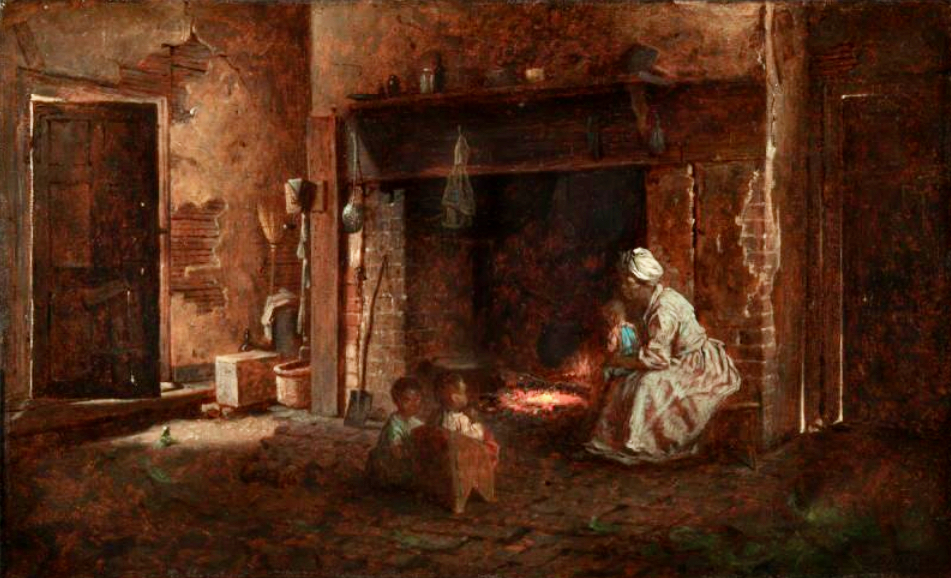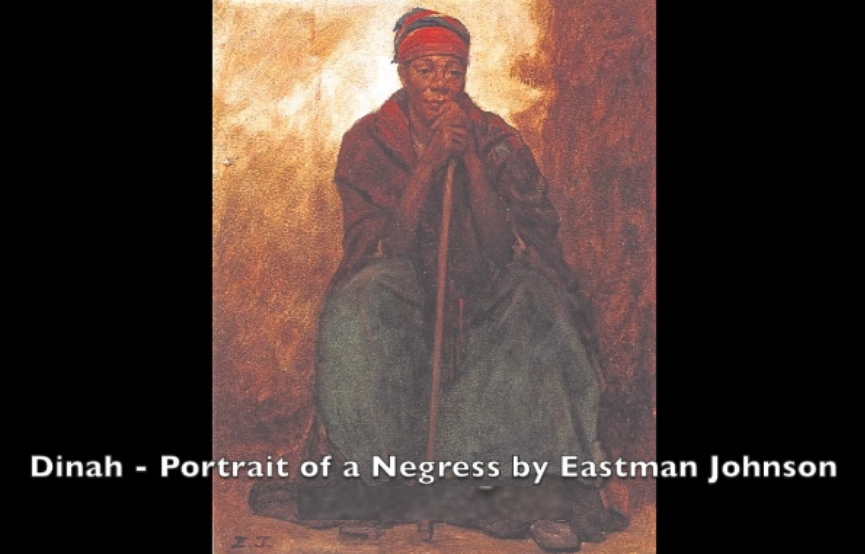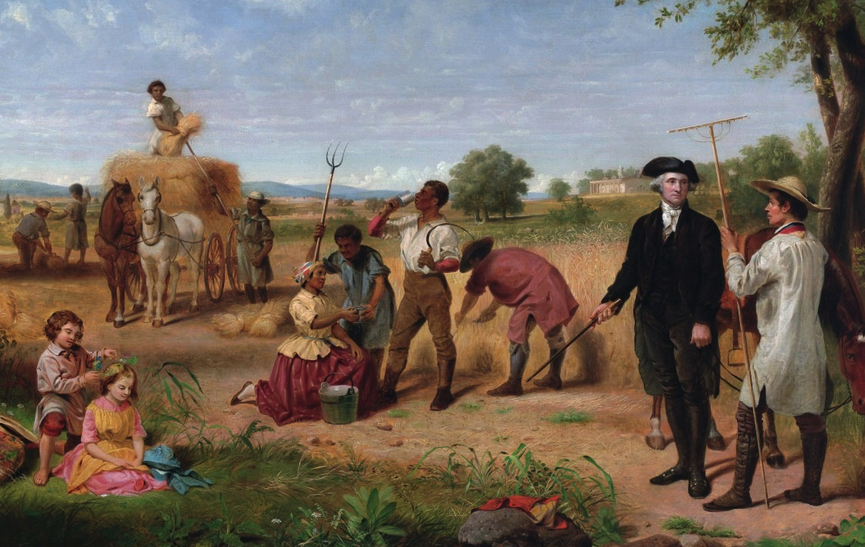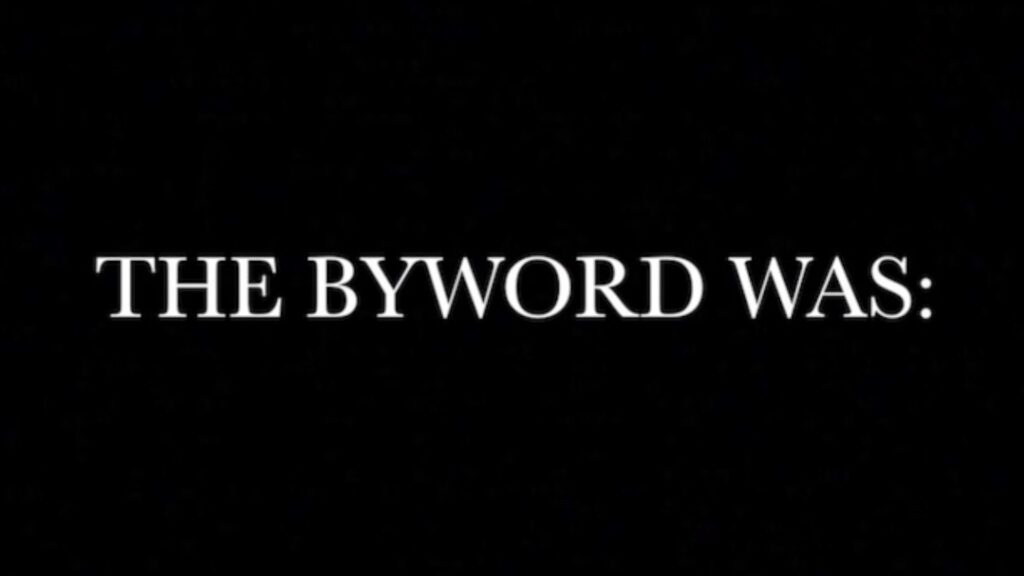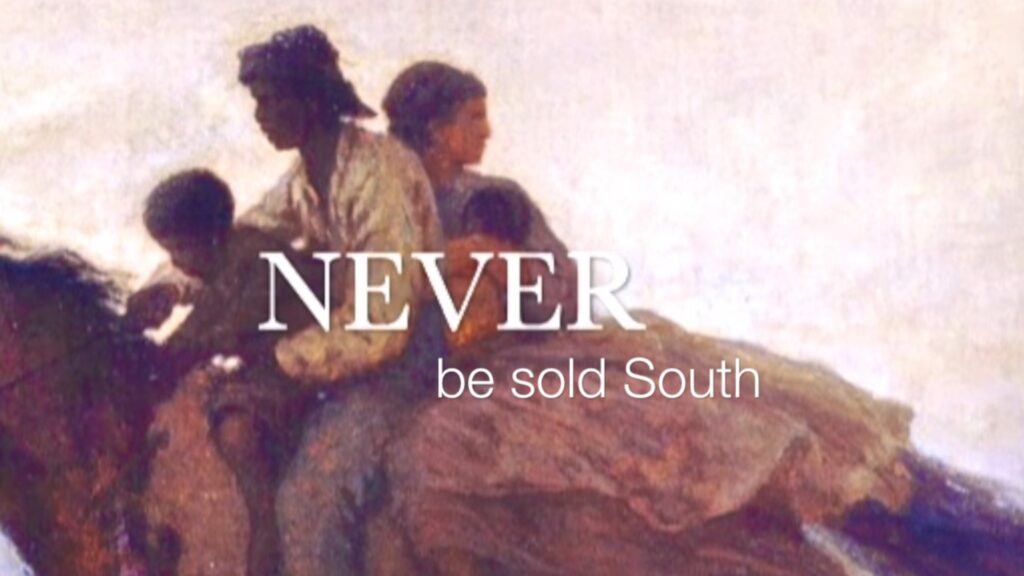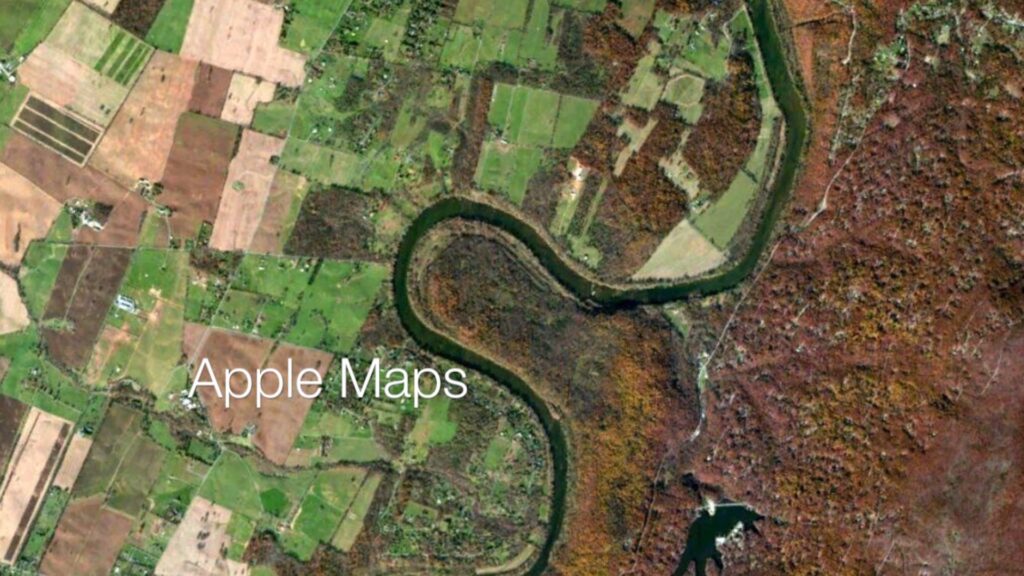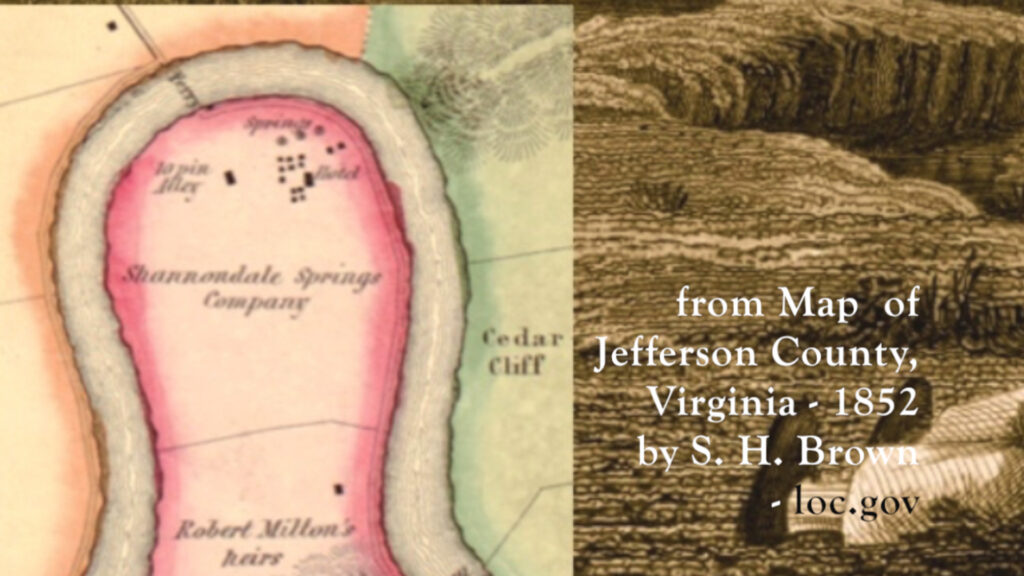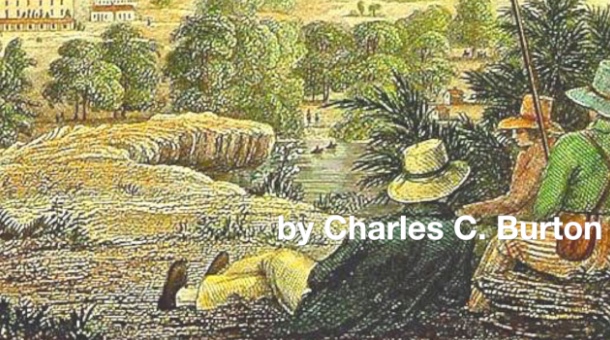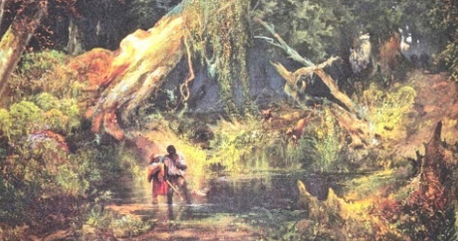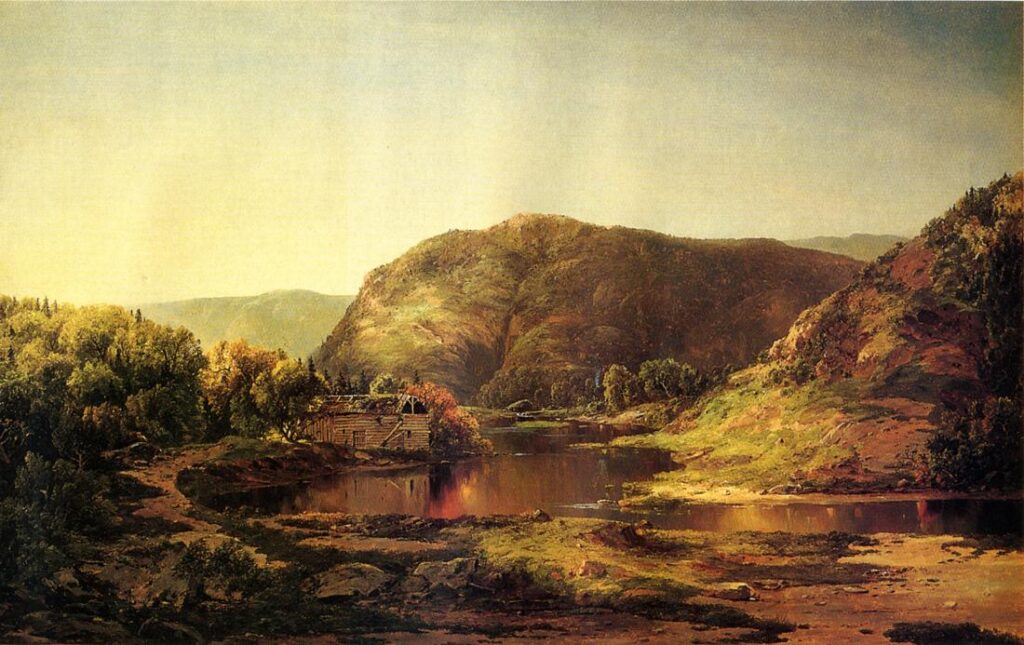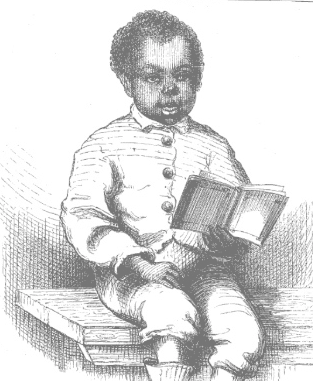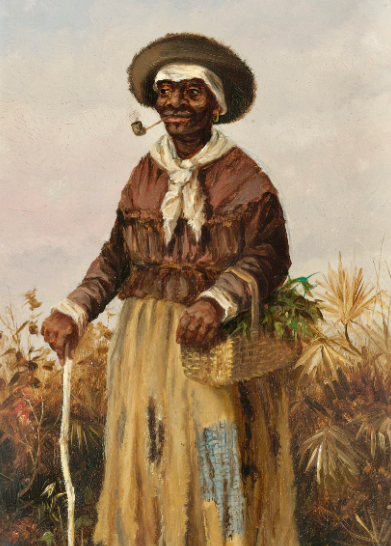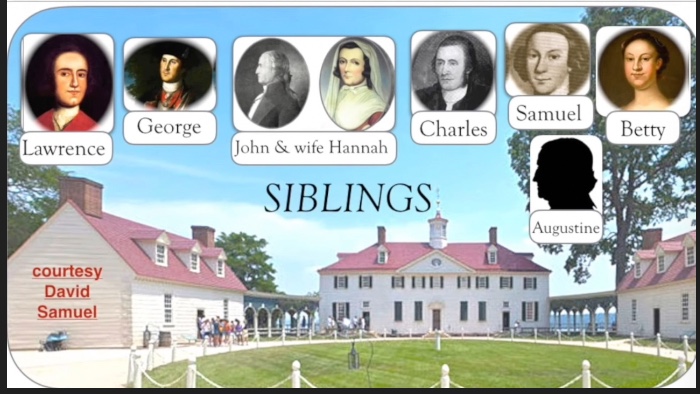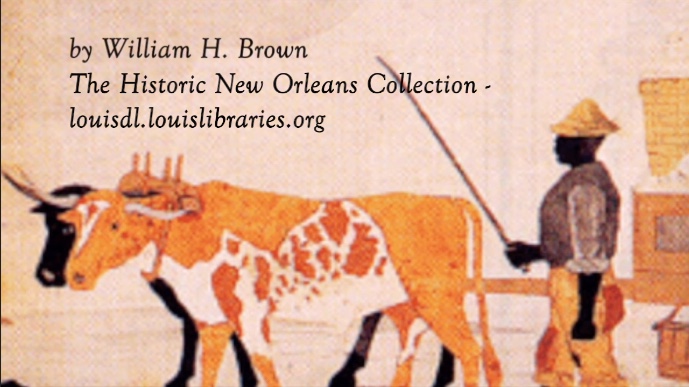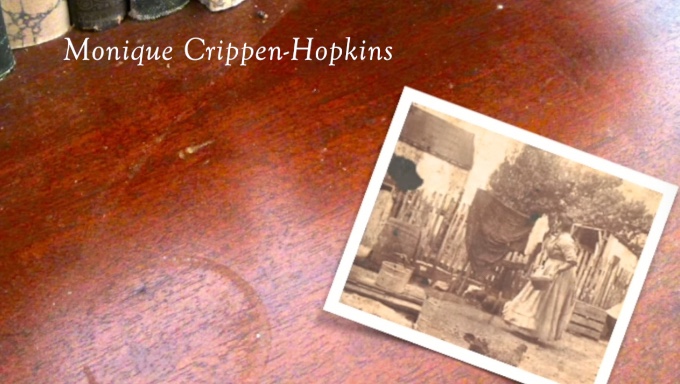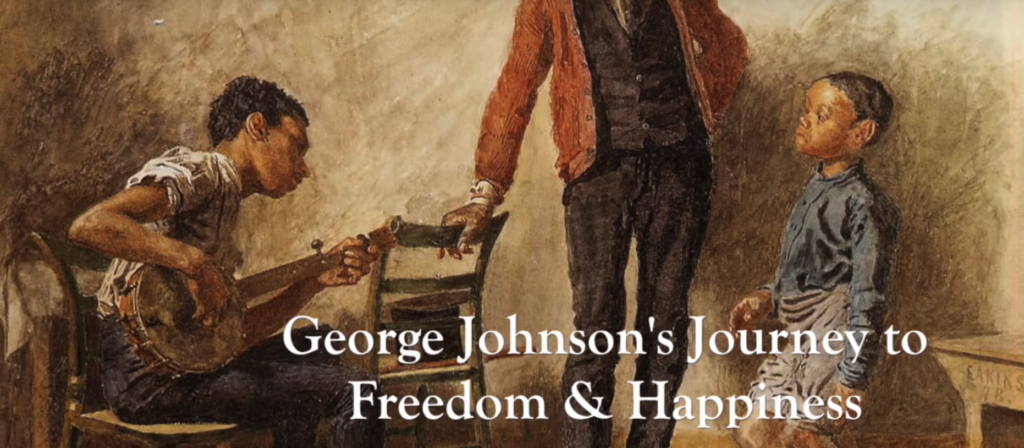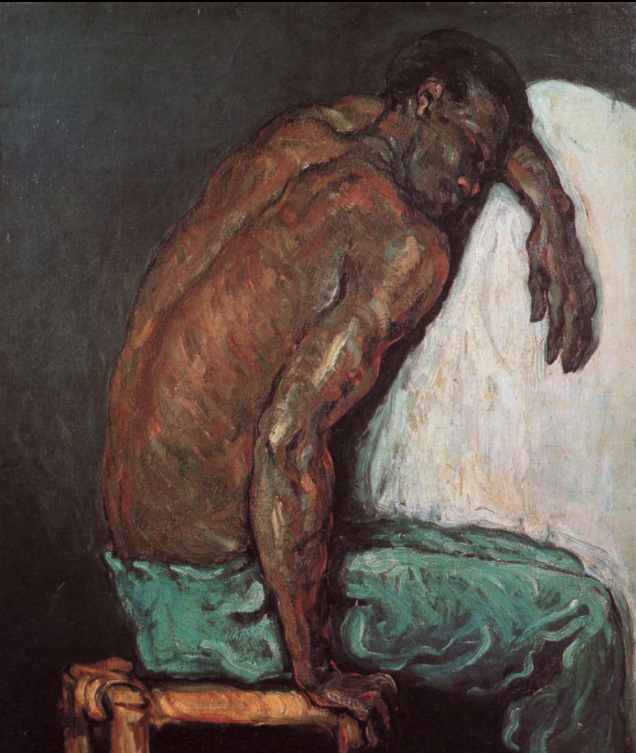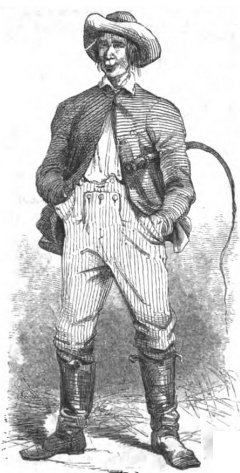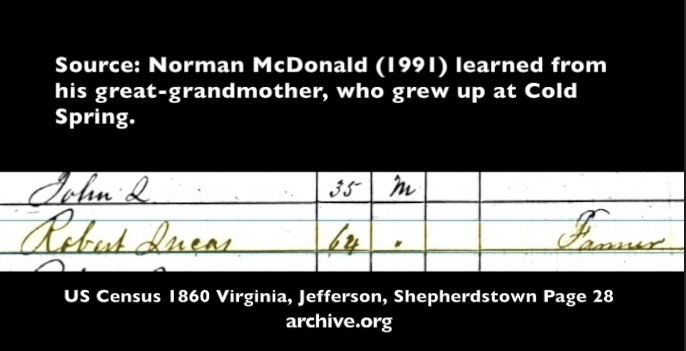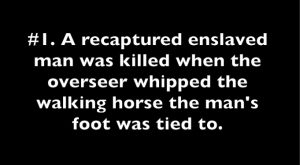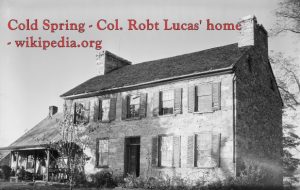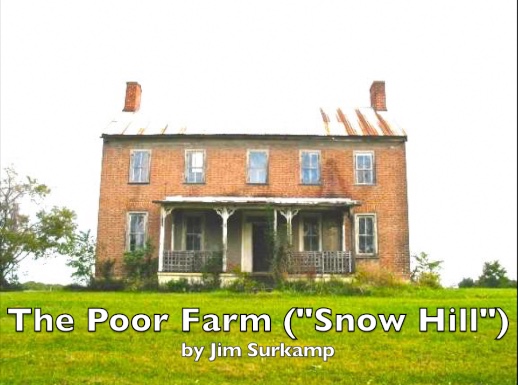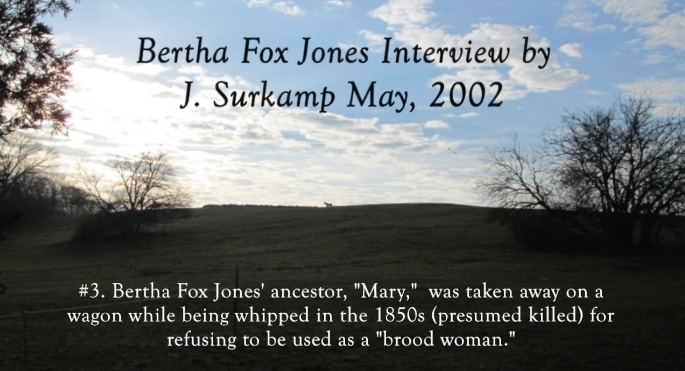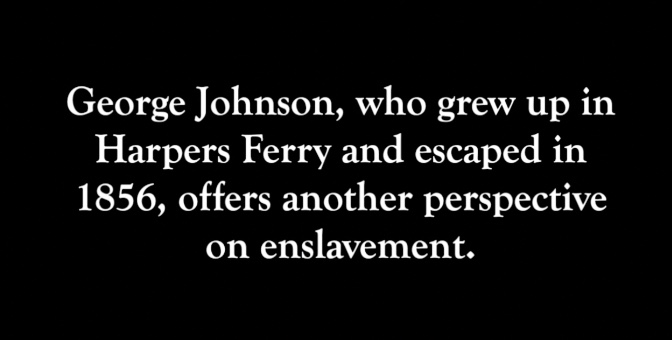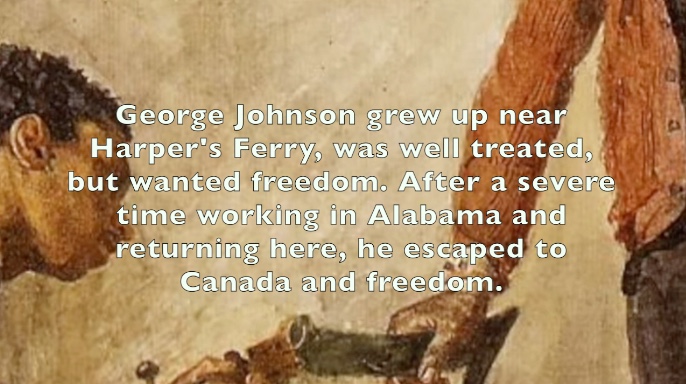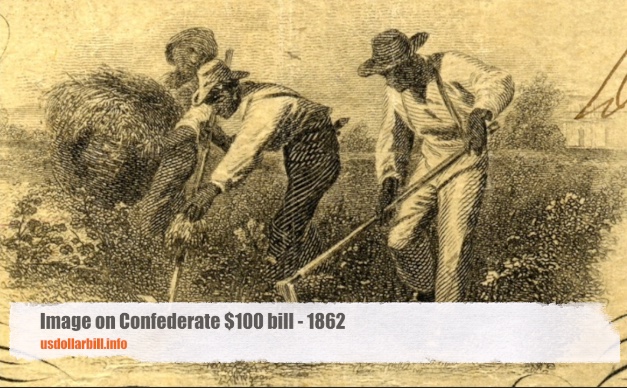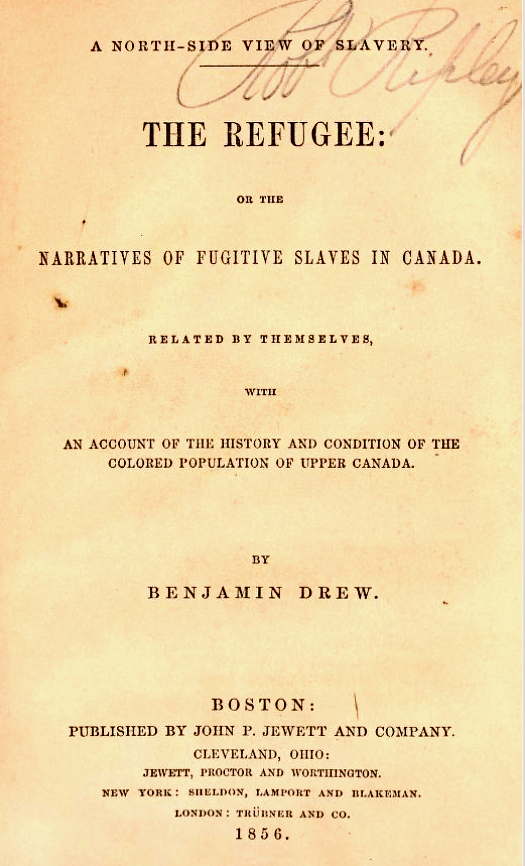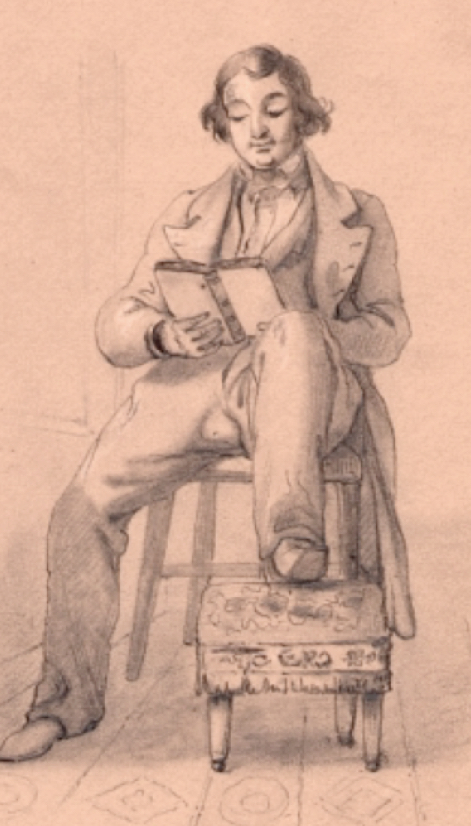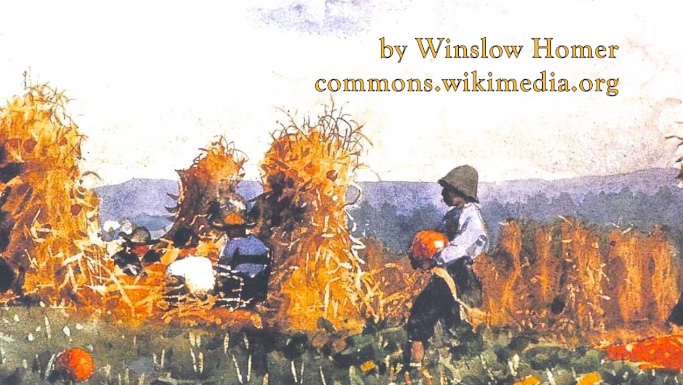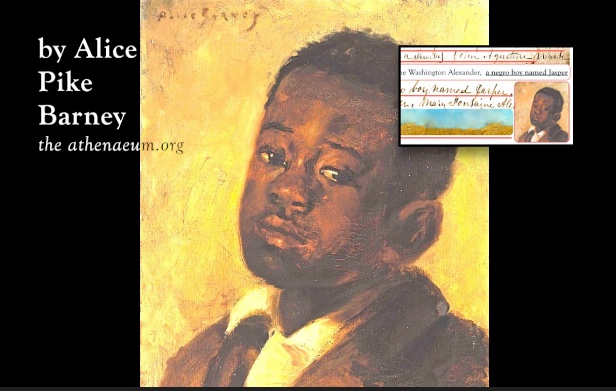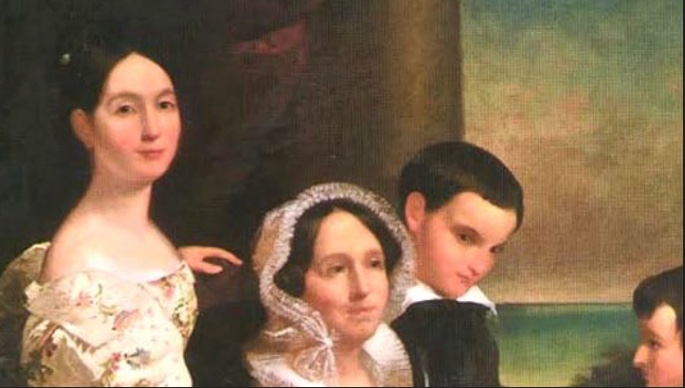1535 words.
STORY 3 – JASPER THOMPSON’S EARLIEST ANCESTORS
Video link within the longer video
https://www.youtube.com/watch?v=4LJpJeIwFMw#t=6m22s
FLICKR 41 images
https://www.flickr.com/photos/jimsurkamp/albums/72157686989491454
With support from American Public University System (apus.edu). The sentiments expressed do not in any way reflect modern-day policies of APUS, and are intended to encourage fact-based exchange for a better understanding of our nation’s foundational values.
Jasper Thompson’s Destiny Day September 6, 1906 by Monique Crippen-Hopkins and Jim Surkamp TRT: 2:53:14 (in 25 chapters)
Video link: https://youtu.be/4LJpJeIwFMw
BEGIN CHAPTER 3 of 25 CHAPTERS – JASPER THOMPSON’S EARLIEST ANCESTORS
Jasper’s father, Solomon was but an infant in 1810. But there was also Fortune, Jasper’s grandfather, who was the gardener on the farm. There was Haney Richardson who with Fortune had and raised eight children along with Solomon.
Prospect Hill also benefitted from the contributions of Haney Richardson-Thompson’s parents at that same time – Boson (or “Boatswain”) and Hannah Richardson.((great-grandmother of Jasper Thompson)
And Haney Richardson’s grandparents – Furrow Sr. and Penny Richardson – were there at Prospect Hill too in 1810. These Thompsons likely worked at Prospect Hill first.
Jasper Thompson’s paternal, great grandfather and Solomon Thompsons grandfather worked at nearby Bullskin Farm, first developed by George Washington. His name also was Jasper Thompson. His wife’s identity is unknown.
Jasper Thompson the elder was working for John and Elizabeth Ariss, he a famed architect, who rented since 1786 from George Washington his Bullskin plantation, where they built a fine home, and also with the help of Jasper farmed another 700 acre parcel also rented from George.
Descendants of Jasper Thompson the elder were still enslaved by law because even though he was emancipated in 1813 by Elizabeth Ariss, the mother of his children, had not been. Her increase by the law then, remained enslaved.
Jasper Thompson – emancipated by name May 24, 1813 – “and all his increase,” but descendants Fortune and Solomon and the family were enslaved again.
Tradition followed in Virginia at that time that the increase would assume the status of the mother, not the father.
The wife of this earlier Jasper Thompsons is not known to Monique Crippen-Hopkins or the family, and this woman could have remained enslaved.

References:

1. Monique Crippen Hopkins genealogybreakingdownthewalls.blogspot.com 13 December 2013 Web. 20 January 2017.
2. Solomon Thompson, Jr. Thompson Collection
University of Kansas Libraries
Thompson Family Collection, Kansas Collection, RH MS 510, Kenneth Spencer Research Library, University of Kansas Libraries
etext.ku.edu 12 January 2010 Web. 20 December 2016.
3. email November 1, 2016 – to Jim Surkamp from John C. Allen, architectural historian, author of “Uncommon Vernacular” :
Ariss moves to Fauquier County in around 1765. Around 1768 he moves to Frederick (soon to be Berkeley).
Here’s where Ariss was living before moving to Rock Hall:
1772 Court order for Warner Washington and others to
inspect “road from flat rock by Mr. Thurston’s by
the head of Kate’s spring, into the road leading to the
bloomery below Mr. Ariss’s…” ((Is this Prospect
Hill?))
This is the Rock Hall lease. The portion of the farm that is where the stone building and house ruins are.
1786 March 13 – GW executes lease for 700 acres “on the
waters of the Bullskin” to “last for the lives of John
Airess and his present wife Elisabeth Ariss for L 60
per year.”
Standard lease printed format except that GW adds in
hand “withon 5 years of this indenture will Build if it’s
not already done a good Dwelling House at least
thirty by forty feet with brick or stone chimneys…”
GW’s other Bullskin leases were required to build
houses of 16 x 16 feet
Battaile Muse account book Jan 17 1786
Ariss must have built a fine house on GW’s land as the tax assessment in the Special House tax of 1798 states:
1798 1798 House Tax – John Ariss listed as a tenant of Gen.
George Washington in a house valued at $1,050, a
high value for the area. Harewood valued at $1,250
1798 1798 Slave Tax – John Ariss listed as overseer for
Thornton Washington Heirs
End of email from John C. Allen
4. Jefferson County, Wv Clerk:
Plat of the partition and division of lands of Hannah Washington, deceased, showing the redivision of Parcel #2 containting respectively 892 acres and 942 acres. Jefferson County Clerk, Deed Room, Charles Town, WV.
documents.jeffersoncountywv.org 10 October 2014 Web. 20 October 2016.
Plat number 28 Deed Book 11, Page 30 August 13, 1818
Plat of the partition and division of the lands of Richard H. L. Washington, Lot #1, 324 acres, conveyed to Bushrod Washington; Lot #2, 286 acres, conveyed to Herbert, and, Lot #3, 274 acres, conveyed to John A. Washington.
Jefferson County Clerk, Deed Room, Charles Town, WV.
documents.jeffersoncountywv.org 10 October 2014 Web. 20 October 2016.
Freedom Deed May 24, 1813 Deed Book 7, Page 484 Elizabeth Ariss
Jefferson County Clerk, Deed Room, Charles Town, WV.
documents.jeffersoncountywv.org 10 October 2014 Web. 20 October 2016.

Image Credits:
BEGIN CHAPTER 3 – JASPER’S THOMPSON’s EARLIEST ANCESTORS
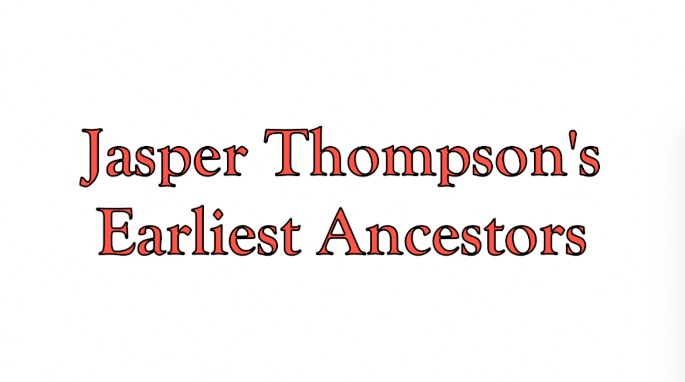
1. Image Credits 3: FINAL
2. Jasper Thompson’s Earliest Ancestors FINAL
3. Banjo by Shana Aisenberg FINAL

4. From-genealogybreakingdownthewalls.blogspot.com Montage FINAL
CREDIT:
Monique Crippen Hopkins genealogybreakingdownthewalls.blogspot.com 13 December 2013 Web. 20 January 2017

5. Jasper’s father, Solomon was but an infant in 1810. But FINAL
CREDIT:
“Babywearing”…The African Trend That Made The Runways
anethnicnurse.com 15 September 2015 Web. 20 December 2016.

6. there was also Fortune, Jasper’s grandfather, FINAL

6.1 TITLE Hannah B. Washington division of estates FINAL
CREDIT:
Hannah B. Washington – division of estates – Deed Book 5 Page 353 – February 13, 1810 – Jefferson County Clerk.

7. who was the gardener on the farm – Fortune – Jasper’s gfather semblance only. FINAL

7.1 who was the gardener on the farm – Fortune – Jasper’s gfather semblance only. (Credit) FINAL
CREDIT:
Washington at Mount Vernon, 1797, Nathaniel Currier, 1852
Courtesy of the Mount Vernon Ladies’ Association
nlm.nih.gov/exhibition/fireandfreedom/exhibition2 5 January 2017 Web 20 January 2017

8. There was Haney Richardson (Credit) FINAL
CREDIT:
Solomon Thompson, Jr. Thompson Collection
University of Kansas Libraries
Thompson Family Collection, Kansas Collection, RH MS 510, Kenneth Spencer Research Library, University of Kansas Libraries
etext.ku.edu 12 January 2010 Web. 20 December 2016.

9. who with Fortune had and raised eight children along with Solomon. (Haney Richardson semblance) FINAL
CREDIT:
David Hunter Strother
“Betsey Sweet” April 11, 1856
images.lib.wvu.edu 22 September 2004 Web. 10 February 2017.

10. Prospect Hill also benefitted from the contributions of Haney Richardson-Thompson’s (farm scene most image) FINAL

10.1 Prospect Hill also benefitted from the contributions of Haney Richardson-Thompson’s (farm scene-Credit) FINAL
CREDIT:
Junius Stearns Washington as a Farmer at Mount Vernon
the-athenaeum.org 23 May 2002 Web. 20 December 2016.

11. parents at that same time – (Thompson Family Tree underlined) FINAL
CREDIT:
Solomon Thompson, Jr. Thompson Collection
University of Kansas Libraries
Thompson Family Collection, Kansas Collection, RH MS 510, Kenneth Spencer Research Library, University of Kansas Libraries
etext.ku.edu 12 January 2010 Web. 20 December 2016.

12. Boson (or “Boatswain”) (detail Tanner painting) FINAL

12.1 Boson (or “Boatswain”) (full Tanner painting) FINAL
CREDIT:
Henry Ossawa Tanner
The Banjo Lesson
the-athenaeum.org 23 May 2002 Web. 20 December 2016.

13. and Hannah Richardson.(great-grandmother of Jasper Thompson) FINAL

13.1 and Hannah Richardson.(entire John Rose painting) FINAL
CREDIT:
Miss Breme Jones
Abby Aldrich Rockefeller Folk Art Museum,
Colonial Williamsburg 22 February 1997 Web. 20 January 2017
14. Music by Shana Aisenberg FINAL
15. And Haney Richardson’s grandparents (Montage family records) FINAL

16. Furrow Sr. and Penny Richardson – were there at Prospect Hill too in 1810.(Credits) FINAL

CREDIT:
Jefferson County Clerk;
Solomon Thompson, Jr. – Thompson Collection – University of Kansas Libraries
17. Furrow Sr. and Penny Richardson were there at Prospect Hill too in 1810.(Mount detail) FINAL

17.1 Furrow Sr. and Penny Richardson were there at Prospect Hill too in 1810.(Mount entire painting) FINAL

CREDIT:
William Sidney Mount
The Power of Music
the-athenaeum.org 23 May 2002 Web. 20 December 2016.
18. Furrow Sr. and Penny Richardson were there at Prospect Hill too in 1810. (Crowe painting Credit) FINAL

18.1 Furrow Sr. and Penny Richardson were there at Prospect Hill too in 1810. (Penny Furrow Jasper’s great great grandmother) (detail from above Crowe painting) FINAL

CREDIT:
Enslaved Waiting for Sale by Eyre Crowe
blog.encyclopediavirginia.org 30 March 2008 Web. 20 January 2017.
19. These Thompsons likely worked at Prospect Hill first. (plat) FINAL

CREDIT:
Deed Book 11, Page 30, Aug. 13, 1818, Jefferson County Clerk
20. but for Jasper Thompson’s great grandfather, father of Fortune and (Darley surveying) FINAL

20.1 but for Jasper Thompson’s great grandfather, father of Fortune and (African-American man in painting) FINAL

CREDIT:
Barbara Lombardi
A drawing of Washington as a young surveyor. history.org 22 February 1997 Web. 20 January 2017
GEORGE WASHINGTON (1732-1799). First President of the United States. Young George Washington as a surveyor on the American frontier. Steel engraving, 19th century, after Felix O.C. Darley. by Granger
21. grandfather of Solomon Sr. – who lived at another nearby Washington home, FINAL

CREDIT
Image of Solomon Thompson Sr – Monique Crippen-Hopkins
22. TITLE: Jasper Thompson’s paternal, great grandfather and Solomon Thompson’s grandfather worked at nearby Bullskin Farm, first developed by George Washington. His name also was Jasper Thompson. His wife’s identity is unknown.

23. bought and developed by George Washington since the early 1750s. (Bullskin Farm) FINAL

CREDIT:
Jim Surkamp
24. Jasper’s great grandfather was also “Jasper Thompson” (Rubens) FINAL

24.1 Jasper’s great grandfather was also “Jasper Thompson” (entire painting Rubens) FINAL

CREDIT:
Four Studies of the Head of a Negro
Peter Paul Rubens – Date unknown
the-athenaeum.org 23 May 2002 Web. 20 December 2016.
25. TITLE: Jasper Thompson the elder was working for John and Elizabeth Ariss, he a famed architect, who rented since 1786 from George Washington his Bullskin plantation, where they built a fine home, and also with the help of Jasper farmed another 700 acre parcel also rented from George. FINAL

26. (Correct “Ariss”) FINAL

26.1 Solomon Thompson Jr. Paper regarding Jasper Thompson the elder FINAL

CREDIT:
Solomon Thompson, Jr. – Thompson Collection – University of Kansas Libraries
27. TITLE Descendants of Jasper Thompson the elder were still enslaved by law because even though he was emancipated in 1813 by Elizabeth Ariss, the mother of his children, had not been. Her increase by the law then, remained enslaved. FINAL

28. Jasper Thompson – emancipated by name May 24, 1813 – “and all his increase,” FINAL

CREDIT:
Freedom Deed May 24, 1813 Deed Book 7, Page 484 Elizabeth Ariss- Jefferson County Clerk
29. babe again FINAL
The wife of this earlier Jasper Thompsons is not known to Monique Crippen-Hopkins or the family, and this woman could have remained enslaved.

CREDIT:
“Babywearing”…The African Trend That Made The Runways
anethnicnurse.com 15 September 2015 Web. 20 December 2016.


Chapter 4 Click Here https://civilwarscholars.com/uncategorized/chapter-4-3-washington-households-in-jefferson-county-1820-forward-by-jim-surkamp/





